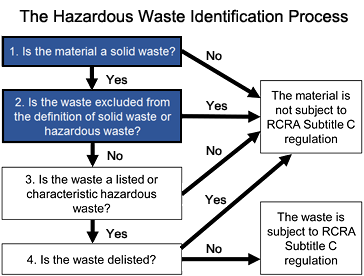Some Known Details About Reclaim Waste
Table of ContentsThe Greatest Guide To Reclaim WasteSome Known Factual Statements About Reclaim Waste The Of Reclaim WasteReclaim Waste for BeginnersFacts About Reclaim Waste Revealed
Discover the types, events, and kinds of fluid waste. Domestic sewer waste describes the waste and items from a residential septic system. This kind of waste is produced by people in residences, schools, and various other buildings. This only includes septic tanks that have a drainpipe field. The appropriate administration and disposal of domestic sewage waste need liquid waste to be transferred to a sewage treatment plant where the proper approaches and equipment are related to purify and deal with waste.
Commercial waste frequently includes potential hazards, such as combustible products or a combination of fluid and solid waste items, and calls for a more innovative and comprehensive disposal process. The disposal of business waste generally entails the filtering of waste prior to transportation to make sure safe and correct disposal. Hazardous waste is produced from by-products and drainage of commercial procedures and production.
This sort of waste can not make use of the exact same sewer administration transportation or procedures as septic or business liquids. The hazardous waste management process needs the examination and screening of fluid waste prior to it undergoes the disposal process (liquid waste disposal melbourne). Runoff waste is the fluid waste that originates from drainage and excess stormwater in very populated locations or cities
Overflow waste can trigger contamination and flooding if not managed appropriately. Making certain proper waste administration can avoid catastrophes and decrease environmental damage.
Rumored Buzz on Reclaim Waste
Get in touch with PROS Solutions today to learn more about our waste management and disposal solutions and the correct ways to look after the fluid waste you create.
(https://reclaimwaste1.edublogs.org/2024/11/12/efficient-liquid-waste-removal-and-disposal-your-complete-guide-to-sustainable-waste-management/)This supposed 'wastewater' is not only a crucial source but, after therapy, will certainly be launched to our land, waterways or the sea. Used water from commodes, showers, baths, kitchen area sinks, laundries and industrial processes is known as wastewater.

water utilized to cool down machinery or tidy plant and equipment). Stormwater, a type of wastewater, is drainage that flows from farming and metropolitan locations such as roofings, parks, gardens, roads, paths and gutters right into stormwater drains pipes, after rain. Stormwater moves untreated directly to neighborhood creeks or rivers, eventually reaching the sea.
An Unbiased View of Reclaim Waste
In Queensland, the majority of wastewater is dealt with at sewage therapy plants. Wastewater is transported from residential or commercial sites through a system of sewage systems and pump terminals, understood as sewerage reticulation, to a Look At This sewage therapy plant.
The Department of Natural Resources recommends regional governments regarding handling, operating and preserving sewerage systems and treatment plants. In unsewered locations, city governments might require homeowners to set up private or household sewage treatment systems to deal with domestic wastewater from toilets, kitchens, shower rooms and washings. The Division of Natural Resources authorises the usage of household systems when they are proven to be reliable.
In some new communities, treatment of some stormwater to eliminate clutter, sand and gravel has actually started utilizing gross pollutant traps. Wastewater therapy happens in four stages: Removes solid issue.
Wastewater then moves right into big storage tanks where solids work out and are removed as sludge. Oil and scum are skimmed from the surface. Makes use of small living microorganisms called micro-organisms to break down and eliminate staying liquified wastes and great particles. Micro-organisms and wastes are integrated in the sludge. Gets rid of nitrogen and phosphorus nutrients that can create algal blooms in our rivers and endanger aquatic life.
Reclaim Waste Can Be Fun For Everyone
Nutrient elimination is not available at all sewage therapy plants due to the fact that it calls for expensive specialised devices. Clear liquid effluent generated after therapy may still include disease-causing micro-organisms - liquid waste removal.

Most wastewater moves into the sewage system. Under the Act, regional governments provide authorizations and licences for eco relevant activities (Periods) including wastewater launches that might have a local effect.
Reclaim Waste Fundamentals Explained
Or else, examples are taken for laboratory analysis. Typically several tests are needed to establish the levels of each of the various contaminants such as oils, hefty metals and pesticides in water. Monitoring offers accurate details about water top quality and can verify that licence conditions are being met. The info gotten via monitoring provides the basis for making water high quality decisions.